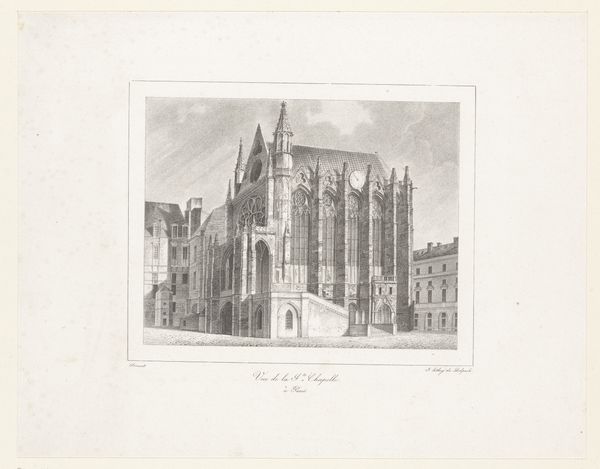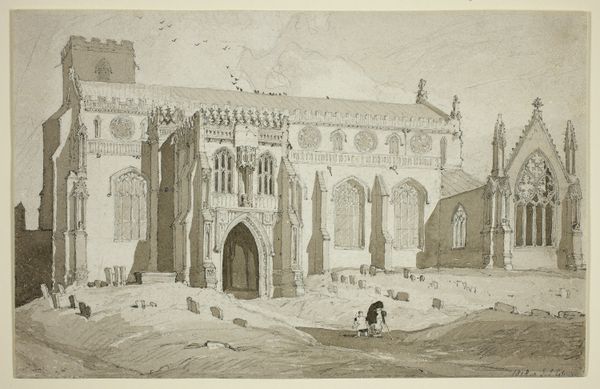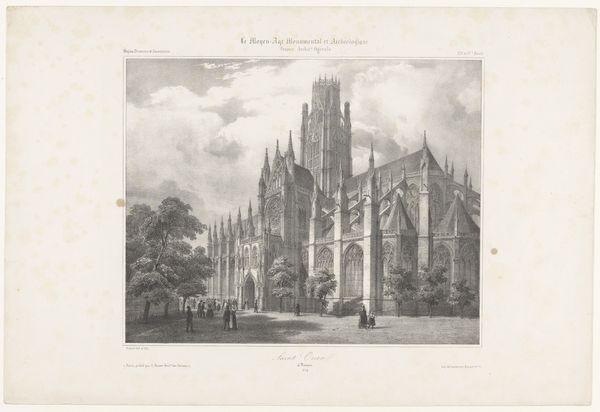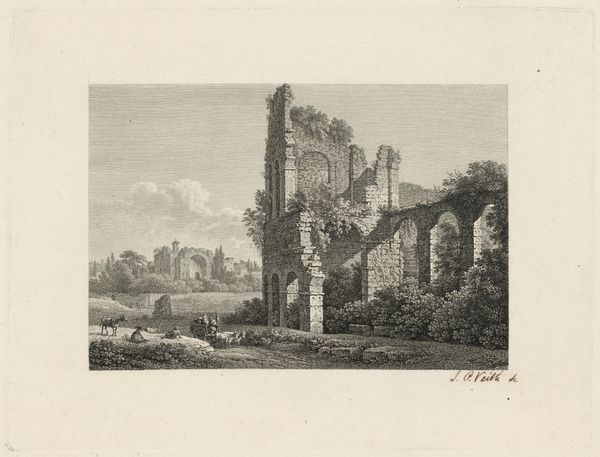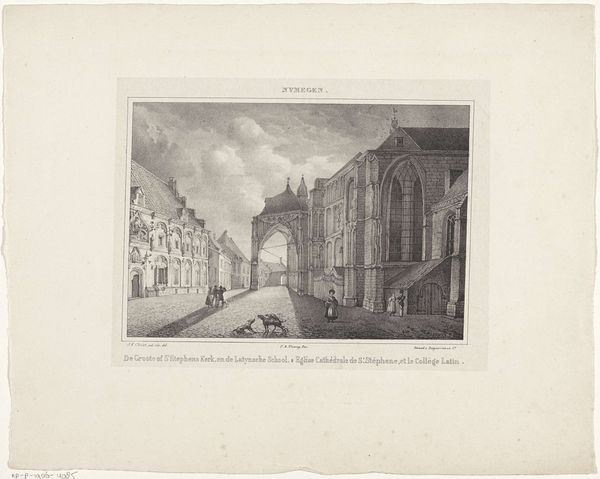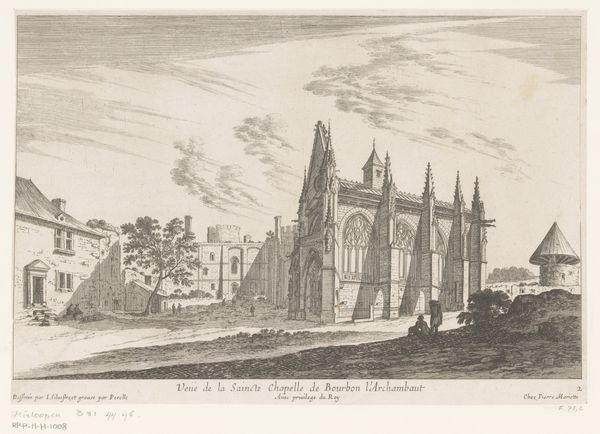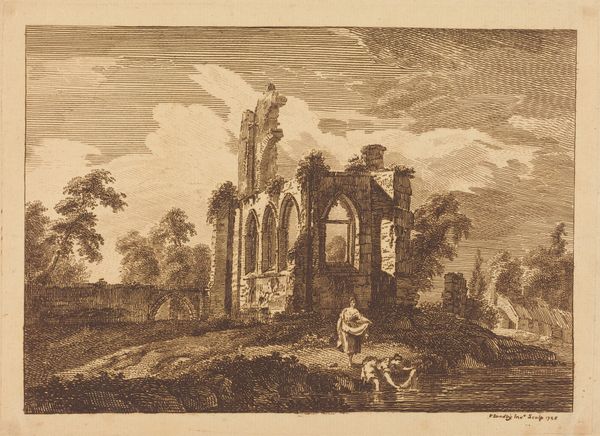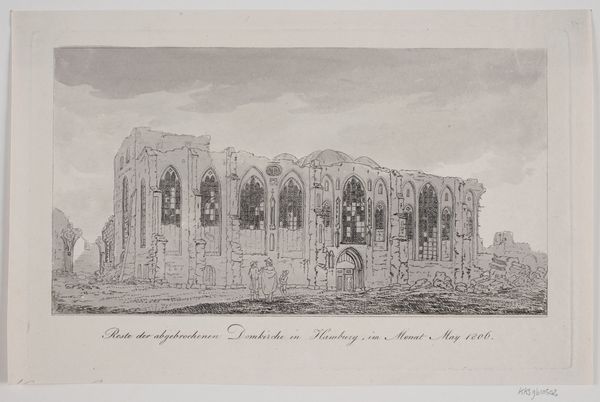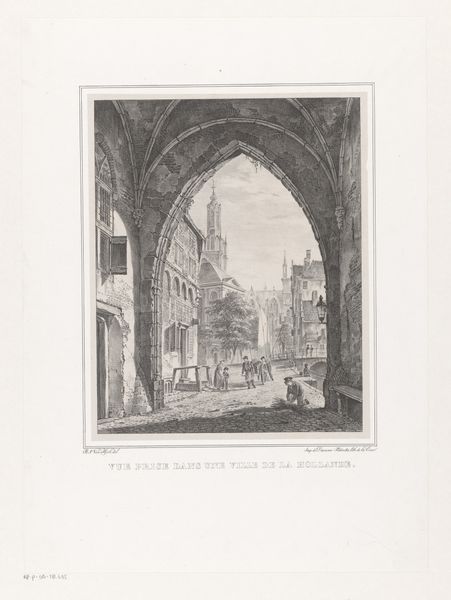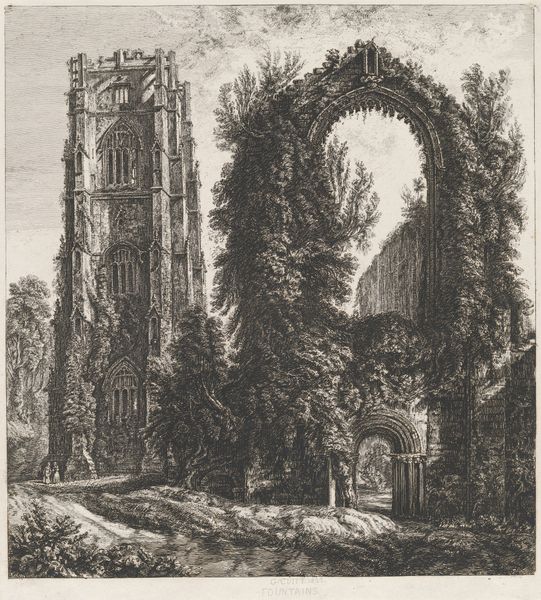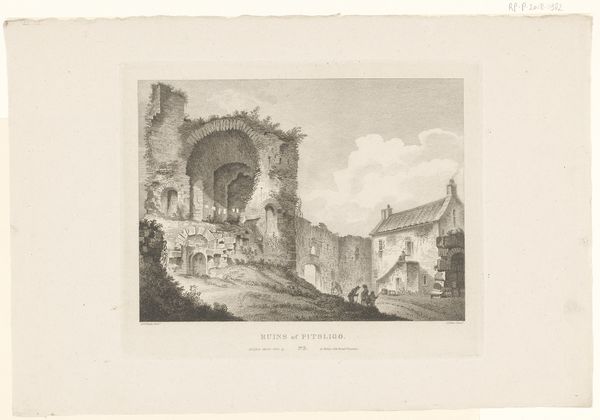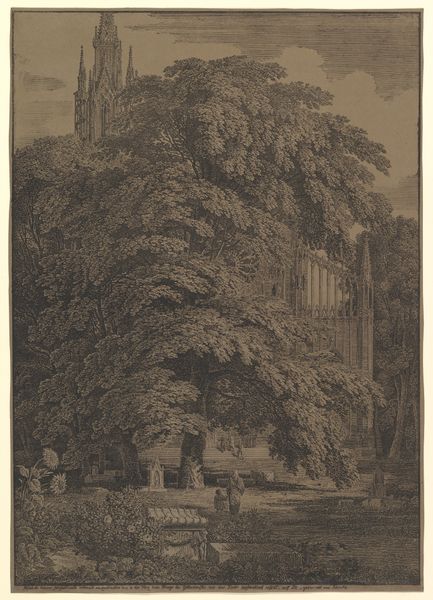
Rivaux Abbey, Yorkshire (Liber Studiorum, part X, plate 51) 1812
0:00
0:00
drawing, print, etching
#
drawing
# print
#
etching
#
landscape
#
romanticism
Dimensions: plate: 7 1/4 x 10 9/16 in. (18.4 x 26.8 cm) sheet: 8 9/16 x 11 15/16 in. (21.7 x 30.3 cm)
Copyright: Public Domain
Curator: What a desolate, yet evocative scene. The image before us is titled Rivaux Abbey, Yorkshire, an etching by J.M.W. Turner, created in 1812 as part of his Liber Studiorum series. Editor: It’s intensely melancholic, isn't it? Like staring at a forgotten memory through sepia-toned glasses. The ruins stand against a turbulent sky, yet there's this strange sense of calm amidst the decay, perhaps coming from the couple in the lower left. Curator: Turner's process in the Liber Studiorum involved creating mezzotints that often integrated etching. His ambition was to make accessible versions of landscape painting. Here, we witness Romanticism in its fascination with ruins. One could see them both literally as architectural degradation but also allegorically about human decay and, I think importantly for Turner, change through material processes. Editor: Yes, like nature reclaiming what humans built. Notice how the trees seem almost to whisper secrets to the stones, there is also this striking effect from a line of birds in the top left of the image, seemingly directing our eye toward the ruins in general. And the light! It’s not glorifying; it’s illuminating the inevitable. Are the workers who labored over each block now equal to these nameless sitters? Curator: Precisely. The image itself is a commercial product meant for a mass market, a far cry from unique commissioned oil paintings by his peers. He is commodifying and reproducing at scale landscape imagery. But also notice the composition itself. The way the trees in the foreground are as intentionally placed as the crumbling architecture, directing our eye to that central structure of the Abbey. The landscape isn’t merely a backdrop but integral to the ruin’s narrative and economic consumption. Editor: Absolutely. Turner’s prints offered people the chance to experience the sublime, transformed and domesticated for personal reflection and I am certain that today, people will encounter similar experiences, despite the commodification of our current mediascape. Curator: So, despite its intended accessibility as a reproducible image, Turner's etching of Rivaux Abbey provokes reflection on production, labor, beauty, and impermanence, something to take with us, I hope, on our journey.
Comments
No comments
Be the first to comment and join the conversation on the ultimate creative platform.

